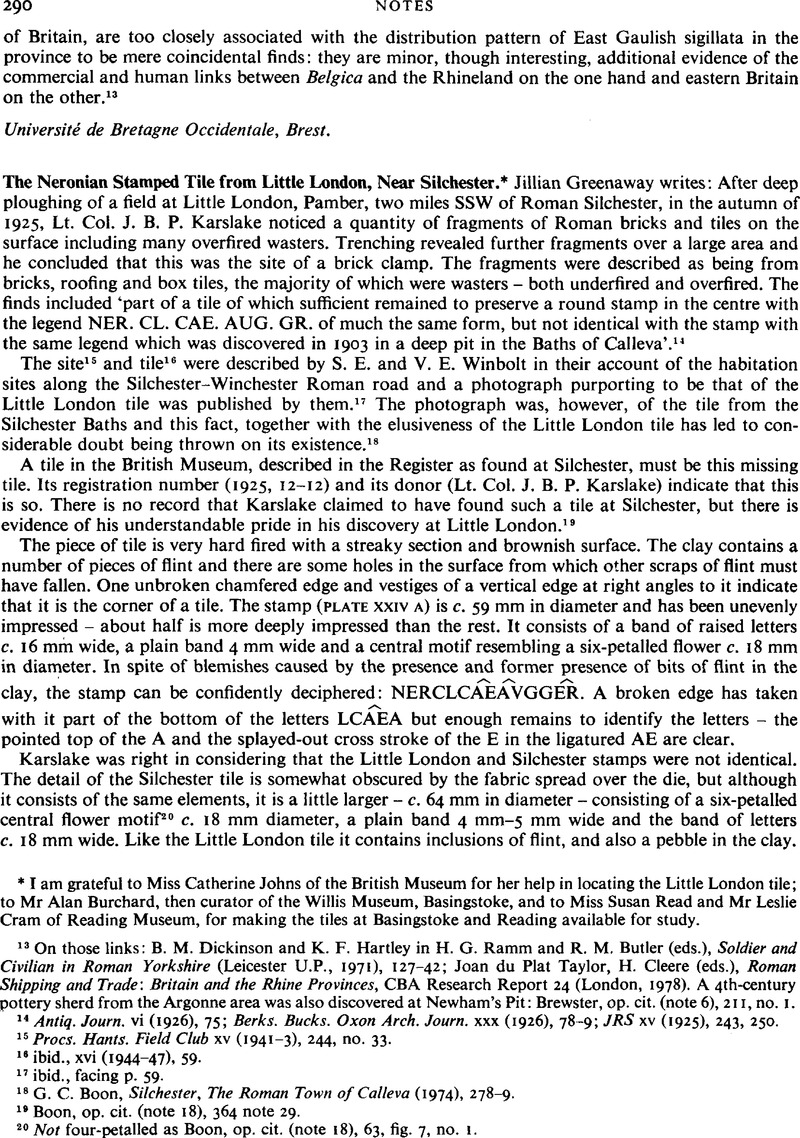Published online by Cambridge University Press: 09 November 2011

14 Antiq. Journ. vi (1926), 75Google Scholar; Berks. Bucks. Oxon Arch. Journ. xxx (1926), 78–9Google Scholar; JRS xv (1925), 243, 250.Google Scholar
15 Procs. Hants. Field Club xv (1941–1943), 244, no. 33.Google Scholar
16 ibid., xvi (1944–47), 59.
17 ibid., facing p. 59.
18 G. C. Boon, Silchester, The Roman Town of Calleva (1974), 278–9.
19 Boon, op. cit. (note 18), 364 note 29.
20 Not four-petalled as Boon, op. cit. (note 18), 63, fig. 7, no. 1.
21 O.S. Record Card 65NW9.
22 A. W. G. Lowther, A Study of Patterns on Roman Flue Tiles and their Distribution (1948).
23 Britannia x (1979), 227–42.Google Scholar
24 ibid., 243–54.
25 In H. P. R. Finberg, The Agrarian History of England and Wales (1967), 29.
26 op. cit. (note 18), 44.
27 Archaeologia cii (1969), 14.Google Scholar
28 ibid., 13–14, trench J(b).
29 ibid., 6, trench B.
30 The argument for the contemporaneity of the Roman roads is weak. The Portway is clearly later than the Inner Earthwork; the road to Winchester and Chichester is not aligned on the south entrance of the Inner Earthwork; no excavation has taken place at the West Entrance to test its relationship with the Roman road to the West; the position of the East entrance is inferred, not proved.
31 Tacitus, Agricola xiv.
32 Antiquity xxii (1948), 172 ff.Google Scholar